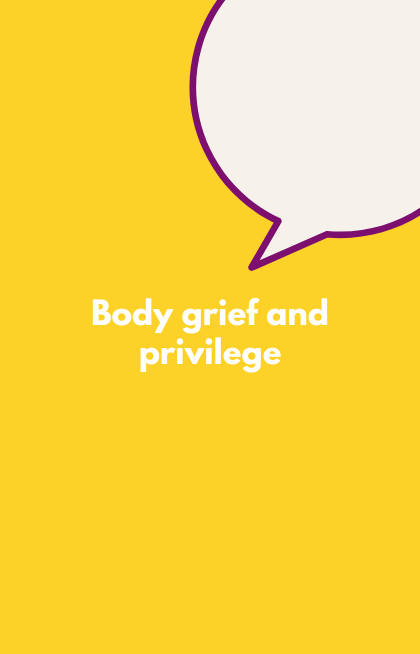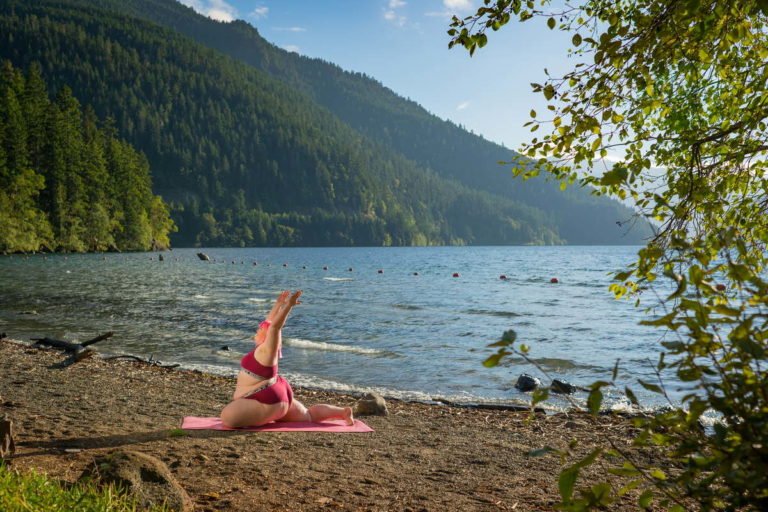LISTEN: Lindley on Soul Sessions with Jodie Gale (with transcript)
Image description: A teal blue background contains these words in white text: “Dieting is a class marker. In my 20s, weight loss was a bucket list goal. Some people want to go to Europe. I wanted to diet.” Lindley’s logo is at the bottom.
An under-analyzed part of diet culture is where it intersects with class and socioeconomic status. I talked about this a bit on my episode of Food Psych, and had a chance to explore it in more depth in this discussion with Jodie Gale on the Soul Sessions podcast.
Part of Jodie’s new Soul Centre, the Soul Sessions podcast explores the causes, the real issues and how to heal from childhood emotional neglect, complex PTSD, addictions, co-dependency, emotional eating, weight concerns and the trance of unworthiness. In our episode, we also talk about living in a fat body, fat acceptance, diet culture, dieting, Health at Every Size®(HAES®), body diversity, diverse stock photos and how to find a body positive photographer.
Transcript
Intro: Welcome to the Soul Sessions Podcast… deep dive into the causes and real issues underlying addiction, co-dependency, emotion eating, weight concerns and the trance of unworthiness. Tune in weekly to the Friend, Nourish and Heal Body Feelings, Mind and Soul. And now, your host, soul-centered psychotherapist, trauma expert and mind, body, eating coaching, Jodie Gale.
Jodie Gale: Welcome to the Soul Sessions with Jodie Gale Podcast. I would like to acknowledge that the traditional custodians of the land on which my office is based and across which we virtually meet and pay my respects to their elders past, present and emerging. I extend that respect to all Aboriginal and [inaudible 00:50] Island people listening to this podcast.
Today, my guest is Lindley Ashline. Lindley creates photographs that celebrate the unique beauty of bodies that fall outside conventional beauty standards. She is also the creator of Body Liberation Stock and the Body Love Shop—a curated resource for body-friendly products and artwork.
Welcome, Lindley.
Lindley Ashline: Thanks. It is a pleasure to be here.
Jodie Gale: So, can you please tell our listeners a little bit about yourself and I guess your struggles with your body, if any, and how you came to be a photographer and fat art curator.
Lindley Ashline: Sure! As you can probably tell by my accent, I’m an American. I live outside of Seattle, Washington. And I have a bit of an unusual back story regarding body image. I grew up without a TV, functionally. There was physically one in our house. But we lived in a rural area and we didn’t really get a lot of reception for public television, and we didn’t have cable. So I just didn’t have a lot of pop culture influence growing up. That doesn’t mean that I didn’t absorb the messages that we all get from culture about bodies and weight and worth. But I didn’t get them as heavily as most other people I know.
So my body acceptance journey, personally, has been pretty easy for me because I didn’t have as much to work through, and because I have that advantage. I always talk about that a little bit when I’m speaking because otherwise, it’s really easy for people who have had the full dose of body hatred that’s instilled in all of us. It’s really easy to look at me and go, “Well, she’s so far along because she’s just that great,” and I won’t ever reach that point. I just had a little bit of an advantage.
But I did grow up absorbing those messages, just like everybody does. And I got to a point when I was in my 20s—I’m 40 now. And when I was in my 20s, I was also fairly poor growing up, and I didn’t have access to diets in the sense that I couldn’t afford, at the time, slim fast shakes, here in the United States, are a big fad. And I would look at those in the store, and I couldn’t afford to buy them.
And so I wanted to diet. I wanted to shrink my body. I was well aware that my body was not acceptable.
And so one of my financial goals as a young adult was to be wealthy enough to afford to diet.
Jodie Gale: Oh, my goodness. It’s something I’ve never really thought about before in terms of dieting. If we think about the programs—Jenny Craig, Weight Watchers, Slim Fast, yes, they all cost money, don’t they?
Lindley Ashline: Yes, dieting is a class marker—a socially economic class marker as much as anything else.
So I reached that point eventually, and I started to diet. And I discovered, just like almost everyone discovers, that it didn’t work. I started to yoyo.
Jodie Gale: What age were you when you started to diet?
Lindley Ashline: In my mid-20s.
Jodie Gale: That’s quite late actually.
Lindley Ashline: Yes. And again, part of that is because I didn’t have—that desire wasn’t in me as strongly. So it was just one of those—it was a bucket list goal. Some people want to go to Europe. I wanted to diet.
Jodie Gale: You’re able to afford to diet.
Lindley Ashline: Yes. So I graduated from college. I landed a middle-class technical writing job in a big city, and I started investing in dieting and investing exercise equipment, and all of the things that are ancillary to that. And I started to yoyo. I lost and gained the same 25 pounds for a year or so. It didn’t take me very long to get bored with this. I started to realize that this wasn’t working.
And like almost everybody else does, I blamed myself. I’m not dedicated enough. I’m not working hard enough. I don’t want it badly enough. I’m too broken to lose weight. I’m just holding on to this weight protectively. And all these stories that we’re told.
And at the same time, I was discovering LiveJournal. It still exists. It’s not as popular. But this is in the mid-2000s. I was discovering the world of plus-size fashion on LiveJournal, which is a blogging community type site. It was a pre-Facebook. Somebody has linked me over to this plus-size fashion website, or fashion community, within LiveJournal, and it blew my mind because for the first time in my life, I was seeing larger-bodied women who were fashionable and stylish, and living their lives unapologetically.
And I’m not a person who is very into fashion or trendiness or clothing really. But seeing that blew my mind. Oh, my gosh. This is a thing is possible for a person in a body like mine. What is this?
And so I just started lurking and absorbing this, and just starting to see bodies like mine in a positive light. And from there, I discovered fat acceptance which now people talk about body positivity. And this was a little bit before body positivity was a thing. But body positivity is an off shoe of fat acceptance.
So for the first time in my life, I was seeing people in bodies like mine, women in fat bodies, in larger bodies, in a positive light—not associated with a negative trait or associated with a scare store, or some kind of negative consequence. Just these people who were living their lives, being very fashionable and trendy and confident.
So from this LiveJournal community, from there, I discovered fat acceptance. Now, you hear people talk about the Body Positive Movement. And that is an off shoe of fat acceptance. At the time, body positivity wasn’t really a movement.
So I discovered fat acceptance. And these authors, these bloggers, who were, again, tended to be people who were living very confidently in their bodies and talking about being very confident in their bodies, again, just blew my mind. And from there, I started discovering the science around bodies and weight, and discovering that we don’t really have a way to make bodies smaller in a long term, scientifically. Calories in and calories out, and all these different diets, they don’t work in the long term. And it’s so very validating because I had just been through this experience of diets not working, and blaming that on myself. And it turns out that that wasn’t my fault at all.
It was because human bodies want to protect us, and they want us to maintain the size we are because otherwise, they think that we’re starving, and they want us to protect us from starving.
So once I found out how much we’ve been lied to about bodies in the service of profit, I got really mad. And that’s where I started becoming an activist myself. And at the same time all of this is happening, I had a corporate job, a series of corporate jobs, in marketing, and I was also a hobby photographer doing major photography. All these things were going on at once, but I was in these marketing jobs where I had to find photos to use, and they were always of people in thin bodies.
Jodie Gale: Of course.
Lindley Ashline: And of course, there’s nothing wrong with being in a thin body, but that was the only option. There were no photos of larger people.
Jodie Gale: Larger people don’t exist.
Lindley Ashline: Right. So in 2015, when I got fed up with a really crappy corporation job and I said, “Screw it. I’m going to be a photographer full time,” I immediately knew who I wanted to work with because it was already—body acceptance was already the center of my personal life anyway. So it just made perfect sense to integrate all these things.
Jodie Gale: There’s a couple of things that you’ve brought up. Firstly, thank goodness, you only did that to yourself for a year because many people, and I’m sure people listening today, have been on that weight cycling, yoyo, dieting cycle. I mean, I know I was for so many years. I get people in my therapy sessions who are at 20, 30, 40 years, and are still going around with that. So thank goodness.
But the other thing is you used the word fat, and you’re my first—I had Cheryl Fuller talk about fat as well, but just for people listening, people freak out when they hear the word fat.
Lindley Ashline: It’s true. It’s true.
Jodie Gale: So as someone in a big body myself and who would use the term fat myself, for people listening, why is it okay for people in big bodies to say that they’re in a fat body? And I know we didn’t talk about this in advanced, so I hope I haven’t thrown you off too much.
Lindley Ashline: Oh, no. You’re fine. I love talking about this because quite often when I say that I am in a fat body, if someone who’s listening or someone who’s reading what I’m saying, will be very defensive on my behalf and horrified because we have associated so many negative qualities with the word fat. When we hear fat, when it comes to a human body, we hear gluttonous, we hear lazy, we hear slobbish, we hear weak-willed. We hear, oh gosh, we hear all these horrible things.
And the thing is that none of these thing are true about fat people any more than they’re true about any other population of human beings. And so some of us who live in these larger bodies are reclaiming that word. We’re using that word as a neutral descriptor.
So when I talk about fat people or fat bodies or myself as fat, it’s exactly the same as saying, “Oh, that person is tall. That person is short. That person is a brunette.”
And that said, don’t call people fat unless that they have indicated that they’re okay with that, or that they have used that word for themselves because there are so many negative qualities associated with that. I’m not going to call Jodie a fat person unless Jodie has already indicated in my hearing that that’s okay. Because if I just randomly called Jodie fat, Jodie doesn’t have any way to know whether I’m saying that as a neutral descriptor, or whether I’m saying to you those other things.
So when I talk about fat folks, I mean that as a neutral descriptor of a population of people. And when I say it about myself, it’s just a description.
Jodie Gale: Yes, thank you for clarifying that. And that’s good to know too for people, I think, in terms of calling other people fat.
So you’re obviously—I love your website. You’ve got so many beautiful photos on there. To have women in larger bodies, why is it important that all bodies—I know, of course, the answer to this, but for our listeners, why is it important that all bodies are represented in the media?
Lindley Ashline: Well, representation tells us what’s normal and what’s okay. So if the only people—and this is fairly true even today in 2020, if the only people I see represented, and by representation, I don’t necessarily mean the people that I pass by on the street, but the people that I see represented by a cultural authority, TV, magazine, the internet, Instagram influencers, advertising. If the only people that I see are thin, white, primarily CIS gender women, straight, who meet a very specific standard of beauty, that is the only thing that becomes acceptable in my mind. And this is established human psychology. If you want to contact me, I can give citations for this. This is well-known. This is not Lindley’s theory. This is how human psychology works.
So when we only see one thing, that’s the only thing that’s acceptable. And that means that we strive to meet that standard because that is a standard that has been set.
So when we represent more types of human bodies, those become acceptable too. And it’s just vitally important because—again, I am speaking with a US-centric viewpoint here. I cannot speak to racial dynamics or gender dynamics or size dynamics anywhere else. But at least here in the US, representing black bodies is vitally important because those bodies are historically oppressed. Representing people with visible disabilities or invisible disabilities. Representing people who are fat, or who are—all the other things that make bodies different from that one standard because that’s how we teach people that their bodies are okay too.
Jodie Gale: Yes. Obviously, not having a TV, I think that definitely makes a difference. I don’t know if you know, do you know the Fiji study around when they got TVs there, that eating disorders—
Lindley Ashline: Oh, yes.
Jodie Gale: Yes, so I think that does make a difference. But you’ve also struggled and you’re aspiring to be able to buy some kind of diet product. But what was it meant for you, and I guess for all of us, if we’d seen different shapes and sizes represented since we were little girls? I grew up in the 70s. I’m 50 next year. So I’ve had 50 years of this stuff. What would have it meant for us?
Lindley Ashline: Well, not only would we have grown up being a lot more likely to think that our bodies are okay too, and that they don’t need to be fixed. But it would mean that we could be putting all these decades of all of our lives, we could have been putting those resources somewhere else.
If you think about all the resources that dieting and trying to shrink your body occupies, the time, money, mental capacity, physical capacity, energy—all of these things, where else could we have been putting that this whole time?
When I stopped dieting, part of the reason I was angry is because I felt so cheated. How much money, even in just that one year, how much money did I sped on diet products? How much mental capacity did I give up because I was hungry all the time?
If you multiply that one year, how much of my emotions did I give up? Because when I’m hungry, I am not happy. How much time did I spend cranky? That I could have been more loving, more generous, more happy, not only with myself but with everybody around me. What kind of career decisions that I’d have made in that hear that may have been influenced by being hungry?
All these things.
Jodie Gale: I think that is so important because there’s a book that I’ve—what’s it called, I think “From Fasting Saints to Anorexic Girls.” The authors of that talk about dieting and going onto eating disorders, being a corset, a very strict corset restricting women, and not just physically, but psychologically. And whe you put it like, and I think I was 12 or 13 when I went on my first diet. It was a whammy. It was full-on, full-on restriction. So from 13 until I went to an eating disorder group at 25, but really, until I went into therapy at 27, that was what, 14 years of every minute of the day obsessing with weight. That is a long time to be not obsessing other wonder, creative things.
Lindley Ashline: Yes—what did you give up in your life, what did you sacrifice, by having what was essentially a second career. If you’re going to have a second job and a third job, make them worth it.
Jodie Gale: Yes, exactly.
Lindley Ashline: And one of the things that we sacrifice when we are part of diet culture is we sacrifice our children. We set our children up to spend their whole lives sacrificing to, I don’t know, the idol of thinness. We them up for eating disorders. We set them up for body hatred. We sacrifice our own children to this. How sad is that? How unnecessary is that?
Jodie Gale: Absolutely. One of the things that I say often is that, with the so-called obesity crisis is that it’s dieting and it’s this focus on weight I think that actually causes that. And of course, the way they try to fix that, it is by putting us all on diets, trying to get us all to diet rather than focusing on people’s health.
Lindley Ashline: And we’re starting to see studies come out too that are showing that weight stigma is at least as damaging to health as fatness, if not more. Because people who are in these larger bodies aren’t getting appropriate healthcare because we’re just prescribed diet with it. And that’s a whole different rant.
But I want to touch back right quick on children with a quick, personal story.
So again, in growing up, I didn’t get a lot of these messages, but I did get—I absorb plenty just from the people around me. But I did not ever absorb it from my parents that my body was not okay.
Jodie Gale: Yes, really important.
Lindley Ashline: Part of that too is because I was actually just an average-sized child until puberty. And then my German peasant genes kicked, and suddenly, I look like every other woman in my family. We’re all large, and blonde, and we have child-bearing hips, and large breasts. We all look like German peasants because that’s what we are.
It’s a proud heritage! And I love [inaudible 18:51].
But we all look like this. And so suddenly, I look like every other woman in my family. And then I started to get the edges of fat disapproval. But I was also a pretty oblivious child as far as bodies went. And when I was, I don’t know, 15 or 16, my family had a tradition—Christmas was a big deal in my family. We did big decorations and big celebrations. Everything was big. And one of our traditions was that my siblings and I would open up Christmas presents early on Christmas Eve. And then on Christmas morning, we’d open the rest. And it was very exciting getting to choose one present.
When I was 15 or 16 on Christmas Eve, I saw that one of the presents was a book. I loved books. I was a nerd. I’m still a nerd. I loved books.
So I went for the package that was clearly a book, and I unwrapped it very excitedly. And it was my first diet book. And the thing is that—I don’t want to be too hard on my parents. We’ve made that decision because they are part of the world.
Jodie Gale: That’s right.
Lindley Ashline: That was the environment that they lived in. And they wanted to protect me from the bad treatment that fat people get.
So it was all intention, but it was very shocking because it was the first time I had even considered a) that the messages I had been getting around fat bodies applied to me because again, living in a larger body was very recent for me. And b) that my parents thought bad things about my body. It was very much a shock.
Jodie Gale: My heart sinks when you say that.
Lindley Ashline: And I don’t think I’ve ever talked about that publicly before. But it was this sudden realization that, “Oh no. That’s me.”
Jodie Gale: There’s something wrong with me, yes. I just said my heart sinks when I hear that story. So although there’s a shift happening around size inclusivity, and actually, when you said, it was the early 2000s, I was a little bit shocked because I really discovered such a thing as fat acceptance when I moved home to Australia, when I did some training with Sarah McMann from Body Matters.
So well done, you, on getting into it so early.
So there is a shift happening, especially with Instagram. But the majority of health and wellness experts—and this probably lays into where parents get this idea that you were talking about around dieting, I guess, because doctors, health and wellness experts, they really support and promote weight loss to fix fat bodies. Many are adamant that fat bodies should not be in the media, let alone on the beach. The TES holiday cover and the amount of fat shaming that she had is just one example of that.
I believe that this representation glorifies obesity, so the subject of the photo is often shamed either by themselves through their internalized thin ideal, or externally by others.
So I guess, firstly, what would you say to other women regarding all bodies being camera worthy?
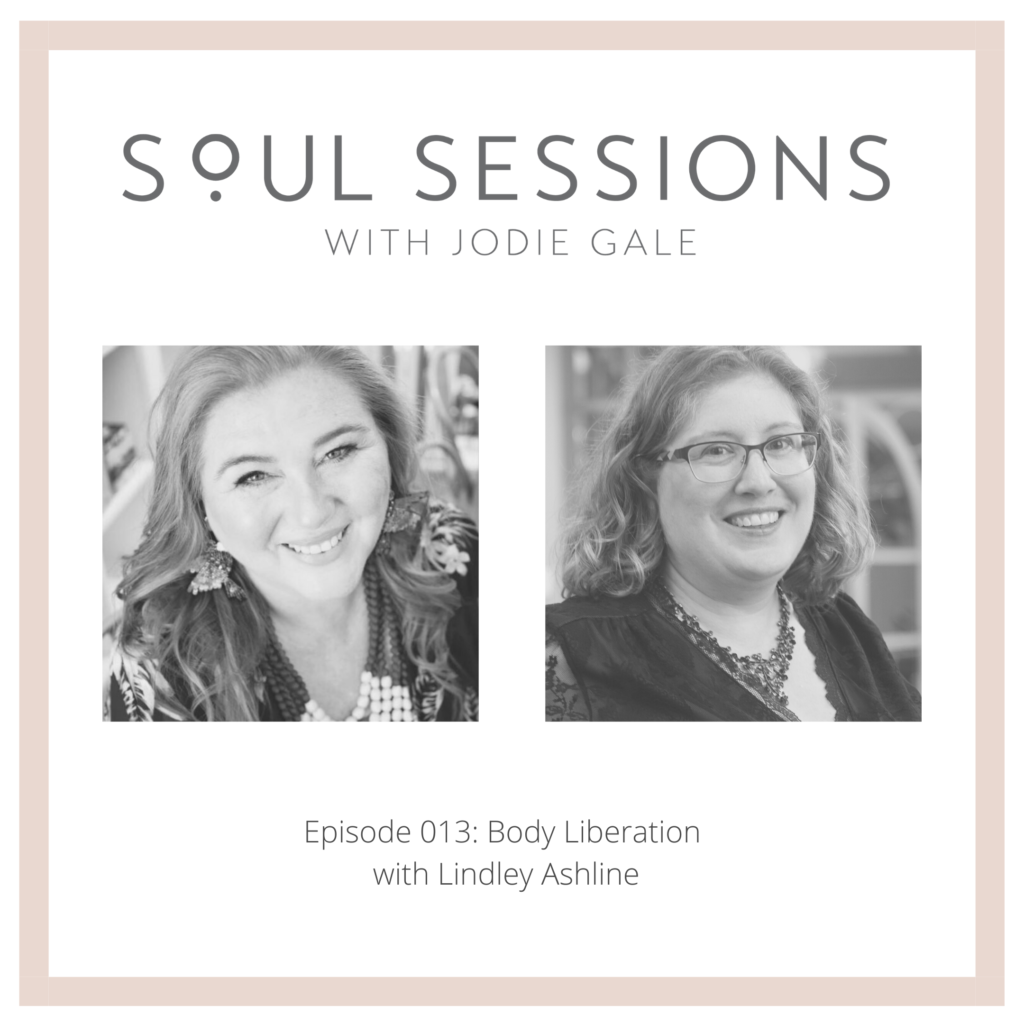
Lindley Ashline: There’s a couple of things going on with this because—and I’m going to come back to that in just a second. But I think what I have spent a lot of time telling people is that our bodies, as they exist right in this moment, not five years from now when you’re thinner, or five years from now, when you can do 15 more sit-ups in a session or whatever. Right now, we are worthy of full participation in public life.
Jodie Gale: Yes.
Lindley Ashline: That includes everything that people in bodies that we consider more worthy than ours. Yes, we do. We’re worthy of going kayaking, going horseback riding, wearing a bikini, sitting on a beach, swimming, going to the pool, doing shopping, being fashionable, being seen as glamorous or elegant or classic, or having a high profile career, being politician, being a photographer.
I didn’t pursue photography as a career for quite a while because I thought that nobody would hire a fat person.
We are worthy of doing everything as somebody in a body that is seen as more worthy gets to do. And that includes being on camera. And when we appear on camera, whether that’s photos or videos, whatever, TikTok, Instagram, Snapchat, whatever, when we represent our bodies or allow someone to represent our body, it now only helps us because we get to have full participation. We are worthy right now. But it also helps teach other people that they’re worthy right now.
Jodie Gale: Yes, absolutely.
Lindley Ashline: And I know that when you’re considering having photographs taken, you’re not thinking about, “Oh, I want to give other people permission.” You’re thinking, “Oh god, I’m scared.”
It’s really cool if you can take that wider view, but it’s totally okay to feel vulnerable about that and not be concerned about the larger representation of bodies in the world. But that is a side effect when we believe that we’re worthy to be representatives. Encouraging other people is a side effect of that.
But you have to internalize that you are just as worthy as someone who you think has a worthy body, who’s probably been Photoshopped, and probably doesn’t look like that anyway.
Jodie Gale: Absolutely.
Lindley Ashline: And in images, posing also can completely change what a body looks like. There are so many—an image is essentially a story, and most of the images that you see are based on a true story, like a movie might be based on a true story, and there’s only a slight resemblance to what actually happened.
On my blog, if you go back a few pages, there is a video—and I did not create this video, but there are some commentaries with it—of a woman. It starts with just the way her body looks, the way that she looks without make-up. And she goes through hair and make-up and Photoshopping. And you see the whole process through the video. And the person who is represented at the end looks nothing like the real human that was there at the start.
And you have to understand that everything you see—if you’re looking for a photographer, and you’re looking at portfolios, all those people are Photoshopped. If you’re looking on Instagram, those people are filtered. Even somebody’s cell phone programs now, smart phone programs, that will filter you and make your eyes bigger and your lips bigger, and smooth your skin. Nothing you see is real. And that’s on on the movie, Matrix.
Jodie Gale: There was that show where they all went to the island for the Fire Festival. Did you see that on Netflix? The amount of fakery, honestly. I sat there—My mum always says, “You and your husband,” my husband, Paul, “You’d be fantastic on Gogobox” because the stuff coming out of my mouth at all these fake people is just hilarious.
But yes, you’ve got a really, really good point there. And I think that that’s really, really, really important. Even therapists, we get caught up in needing to project some kind of image.
Lindley Ashline: And I want to pull that out right quick and talk about that because I feel like it’s really important to understand that most of what you see is a story that has been built around what was probably a regular human being to start with.
When we talk about Photoshop, and we talk about digitally changing bodies, it gets really complex. Because in my photography, I try to create these images, these stories, that are as close to real life as possible, to help people see their bodies as they actually are. Because if I remove that fat roll, or I digitally pretend that you don’t have crow feet, that’s not—I’m taking away your story. I’m taking away your history.
You earned those smile lines. You earned those scars. Who am I to take that away from you?
But at the same time, it depends on what those images are being built for. When I do headshots, professional headshots for people, I will do a little bit of skin smoothing. I will do a little bit of eye lining. I will do a very light version of what a regular photographer might do it because those affect your career. I’m still not going to make you look thinner, but I will do very light retouching because it’s one thing to come to me—I still want you to see your body the way it is. But we also live in the world.
Jodie Gale: Yes, absolutely.
Lindley Ashline: We live in the world, and there are ramifications to not meeting beauty standards. And it’s hard enough for fat folks to get jobs—we get paid less when we get them. You don’t need me giving a totally unvarnished product back to you in a way that might sabotage you. So we’re going to compromise on that. But on regular portraits, no, I’m not going to Photoshop them.
We have to acknowledge that we live in the world too.
Jodie Gale: Yes, absolutely. And so just come back to those questions about all bodies are camera worthy, and I guess, let’s just cut out the camera and just say worthy. I guess the second part of that question for me was health professionals listening, and it’s something I bring up in almost every episode with people I’m interviewing. Even therapists get caught up in this around colluding with the diet industry and basically saying that if we go back to the fat bodies in the media or glorifying obesity, and that we should be taking care of our health and whatever else. What advice would you give to health professionals who are listening?
Lindley Ashline: I actually talk on my social media, particularly my Instagram, which is Body Liberation with Lindley. I do actually talk a lot to health care professionals. I do a lot of education for health care professionals around fat and fatness and weight stigma. But I think in a nutshell, first off, get your science right. We don’t actually have a way to make fat bodies thin in the long term. We don’t have a way to change human body size in the long term. Eventually, those bodies will return to their previous weight. And the majority of them will gain more than they lost. It’s something like two-thirds. I think they’ll gain more than they lost.
And again, you can contact me through my social media, I will give you citations for this. I am not making this up.
Jodie Gale: I just want to add in there too, Lindley, and people who can keep the weight off, my experience is that they are chronic dieters for life.
Lindley Ashline: Yes, and who wants to spend their live obsessing about that when we also—again, when I’m talking about getting your science right, we also do not have causational evidence that fatness causes health problems. We have some correlational evidence. But there’s also correlational evidence that tall people are more prone to certain health conditions, and that people with certain ethnicities are more prone to certain health conditions, and that short people, and redheads, and brunettes.
We have all kinds of core correlational evidence to all sorts of things. But we’re not looking at tall people and going, “Why are you so tall? When are you going to lose that height?”
It’s funny because it’s so out there. And we don’t have a way to make tall people short in the long term without cutting off their feet. And we also don’t have a way to make fat people thin in the long term. And yet, we have, here in the US, it’s like a $70-billion a year industry based on telling people that they can do it if they’re just worthy enough. If they try hard enough, they too can be thin and worthy.
And none of it works. There’s just no evidence that any of that works, again, in the long term, for more than about a year.
Jodie Gale: Yes, most of it, as we say, is typically a follow-up straight after a diet or it’s the same with some certain types of therapies. A lot of the evidence is very short-term evidence. It’s not taken years down the line.
On your website, you’ve got some beautiful stock photos, and you don’t want contributions of headless fatties or anyone without a head with rare exceptions. Can you say more about this and why?
Lindley Ashline: So stock photos. For anyone who is not familiar with that term, stock photos are the photos that companies buy to use in their marketing, on their website, in their social media, on TV, when they either don’t have the resources to or don’t want to set up their own photoshoot.
If I’m a marketer for a company, and I need a photo of someone, I don’t know, drinking a glass of water, I’m not going to hire a photographer and pay for a whole photoshoot to get one photo. I’m going to go a stock photo website and buy that photo.
So that’s what stock photos are for. And we see them everywhere. They’re so pervasive because it’s pretty much anyone who—if it’s not a photo of the person running the company, or the employees, or it’s not a big custom photoshoot from a big company, it’s a stock photo. And there are also stock photos of objects and nature scenes, and all sorts of things.
But talking about people, that’s where those photos come from. And those photos, they’re gradually getting more diverse, in the sense of what you can go and find on the big stock photo sites. You can now find, gradually, more people of color and more diversity. But it is very slow. And you’ve probably seen the official diverse board room photo. The corporate photo where it’s five people standing behind a conference table, in front of a window. There are three white men, a black man and an Asian woman. And they’re all thin. And they all look like models because they are.
So the stock photo work that I’m doing is a complete rebellion against this. It’s the complete opposite. And you cannot see me but I’m waving my arms around in person because I’m very passionate about this.
So on the site, I do produce most of those photos myself. You can find these at BodyLiberationStock.com, and these links will be in the show notes as well.
Jodie Gale: They will.
Lindley Ashline: I do produce most of those myself, but I do have contributors. I’ve got a couple of photographers who contribute photos and then some illustrators. And they all get paid a living wage for their work because that’s really important to me. They get a great big royalty percentage. You can find a lot information on the site.
But I’m very picky in what I’ll accept as a contribution because again, if I am rebelling against the normal, against the beauty standards-based stock photos, I can’t very well take beauty standards-based stock photos for the people. And one of the most promiscuous kinds of photos that you see is the one of the headless fatty. And these are—here in the States, you often see this in a video clip, like on your local news when you tune in on the TV. It will be a fat person walking down the street, and the cameras are usually focused on their belly, and they don’t have a head.
Jodie Gale: And they’re also carrying some kind of—in inverted commas because I don’t really use this word, but “junk food.”
Lindley Ashline: Oh yes, yes… and that is so de-humanizing. And part of the reason that this is done is so that people don’t have to get [inaudible 34:07]. It’s really shady that way too because if the person can’t be identified, they can’t come back and sue you because if they can identify it, they can’t come back and sue you.
Jodie Gale: Oh, that’s terrible!
Lindley Ashline: So that’s part why that happens. And of course, the legality of that is different in various places. But it’s so de-humanizing. We don’t see that with any other population. It’s only fat people because their heads are cut off.
Now that I’ve said this, someone will come back to me and e-mail me three weeks after this and say, “You have headless fatty photos on your site.” And it’s true that I do have a few. I took those with very specific intent.
Jodie Gale: Yes. I know one of them in particular because when I was looking for—you wrote a guest post for me and I was looking for one. There was some beautiful photos of, I think, an afternoon tea, where you could see someone sitting with a cup of tea. But it was a close-up and I just thought they were just beautiful. So they’re done very classy.
Lindley Ashline: They’re very clearly not the intent…
Jodie Gale: Yes, that’s right. So women who come to you, they come for—I noticed on your site, they come for a variety of photos. Can you tell us a little bit about what type of photos you take? And I know you take stock photos, but people, I think, come to you for portraits and other kind of photos as well. And what’s the kind of experience that you typically like to provide for your clients, and how they experienced it, I guess?
Lindley Ashline: So the people who come to me for photos, as far as client photography is, as opposed to stock photography or events, I do regular portrait photography. And what that looks like is it’s often someone who is working on accepting their body, and they have come to me because they’re recovering from an eating disorder, or they have reached a birthday milestone, and they’re like, “I’m ready. I’m ready to see my body as it exists.” I also do boudoir photography. That’s the risqué, sexy lingerie photos, if you’re not already familiar with that. And every once in a while, I do headshots.
And then I also do small business branding which is where somebody has a small business, and they need photos—they need a headshot but they also need photos for their website and their social media and brochures. And so we’ll do a full photo session, but it’s based on their business.
And the experience that I give people is very warm and fuzzy because I am primarily working with people in different oppressed populations. I also work with quite a few trans folks. Because again, when you’re talking about learning to see your body, the trans folks are often in need of that as well.
Jodie Gale: Yes, absolutely.
Lindley Ashline: And particularly trans folks who are experimenting with different presentation. Sometimes—I recently had a client who—and these photos don’t get released publicly because there are—and I don’t name my clients unless they specifically request it. And I don’t tag them unless they specifically ask me to. But in theory, if these got connected to them, it can mess with their careers. So of course, these didn’t get through on the internet.
But there’s a particular client, is presenting as male. They are not out of being transgender, but they wanted to come to me, and be super girly, and get the feather boa out, and do the thing. And we had a blast .And they got to leave their public persona behind at the door.
So a lot of what I do is just giving people space for that, giving people space to just leave behind all the negative crap, and have it be a totally safe space for their body. And I also do a lot of informal coaching because I live with an anxiety disorder, and so for me, when I interact with people, it’s really important that I know what’s going to happen, in what order, why are we going to do this. What happens if I get overwhelmed? I need a minute. Am I allowed to set boundaries? How can I set boundaries?
And so I make that available. I give people so much information. It’s probably overwhelming.
Jodie Gale: That’s so wonderful. I think you’re right. I mean, I just had my first professional photoshoot last week. My first one ever. And even for someone like me who has—I’ve done a lot of work on myself over the years in terms of size acceptance and obviously, eating disorder recovery, it’s really scary. Firstly, having the photos done, and then putting them out there.
So the fact that you are providing people with that coaching, I think is just wonderful. I think it would really put people at ease. So fantastic.
Lindley Ashline: Particularly people who are not used to seeing their bodies. Particularly, those of us in large bodies, we are taught to hide them. We are taught to stand in the back of photographs. We’re taught to be the one behind the camera. Not only that, but there’s such a big power imbalance. When I pick up that camera, I become an authority figure. I’m the one with power in that scenario, so I had to be really cautious about how I use that power.
Jodie Gale: Absolutely.
Lindley Ashline: Because it’s really easy for a photographer to just give you a really terrible experience without meaning to. And the way I portray you is in the way that you are going to see yourself because that’s literally the means that you will use to see yourself.
So it is absolutely vital for me to be respectful of your body and supportive of your body, no matter what kind of body you come in with.
Jodie Gale: And I think that comes back to you receiving the diet book that year. Someone’s coming to be—I always talk about people becoming more and more their true selves and if there’s someone behind the camera, it’s like going to the doctor. I’ve said this in one of my other interviews. Going for a pap smear and being told, “You can do with losing a little bit of weight.” Or going to get my braces and, “Invisalign, you might lose some weight.” Oh, no. Don’t even go there.
But the photographer is in a position of power. Everything you told—I think this is going to be really, really useful for other photographers out there that might be listening too. And actually, anyone in any profession. Women and men, they don’t need to be given a diet book everywhere they go.
And so for women out there listening who don’t live in your hometown, what should they look for when having their personal, professional photos taken? You’ve just started to touch on that. But is there anything else you would add to that?
Lindley Ashline: Oh gosh. So I have so much to say about this that I wrote a whole e-book about it.
Jodie Gale: Oh, did you?
Lindley Ashline: It is on my website. I’ll give you some material right now too. But yes, there’s a whole free e-book about this because I do have people who travel in to see me. They’ll fly in for a weekend, see some of Seattle, it’s a beautiful sight, get their photos taken, and go home.
But for a lot of people, that is not practical. And sometimes, when there’s an ocean in between, that’s a little bit of a big field too.
Jodie Gale: Especially with Coronavirus.
Lindley Ashline: Yes. And for the record, as of the taping of this podcast, I am not doing client photography because where I live, outside Seattle, it’s not safe for me to do so, and it’s not safe for my clients. That will change as soon as the interview goes out. So by the time this is released, if we’re in luck, that will change.
Jodie Gale: Fingers crossed.
Lindley Ashline: But as of this taping, not much. But yes, I get so many questions from people, “How do I find a photographer I can trust? How do I find somebody near me? I can’t fly to Seattle. How do I find somebody that’s going to work for me?”
There are a lot of different things you can look for, but the most important thing is to go with your gut feeling. When you look at a photographer’s website, how do their photos make you feel? Are you intimated or are you excited? Can you see yourself in those photos? And I don’t mean by the bodies in the photos. But I mean the look and feel of the photos. Do those feel comfortable for you? Did they feel intimidating or did they feel exciting? Does the style work for you? Because the style of the photographer has on their website, the look and feel of those photos is what your photos are going to look like too.
And so if you were to come to me, I do a lot of nature work, a lot of natural lights. I don’t do really hard-edged glamour fashion look. So you wouldn’t come to me for that. You would want to find somebody that’s matched that.
But when you look at a photographer’s website too, and you look at their portfolio, what kind of bodies do you see? Do you see larger bodies? Do you see bodies of color? Do they have anybody there with maybe a visible disability? Are there people who look like you?
Jodie Gale: That’s probably why I remember looking, when I was looking for mine, feeling so intimated because so many photographers, and I don’t know, whether they do take photos of big people or not, but there certainly wasn’t any on their website.
Lindley Ashline: I have a friend who is not local to me who worked for the photographer, and it was very, very vulnerable for her because she gets fine arts nude photos for this photographer. She modeled. It was very vulnerable, a very important experience for her, and the photographer did not put those photos in his portfolio. And she was crushed because that was her assumption and her understanding that that was going to result… this representation in that portfolio.
And so then when he didn’t live up to that, that was very crushing for her.
One of the things that I haven’t talked about here is age. Are there people who aren’t 20 in that portfolio? Are there people who are not female presenting? Are the people in those photos—think about your own gender presentation. And I don’t mean you have to be LGBT. I mean, if you’re a woman, are you a really girly girl, or would you rather have a more androgynous appearance? Are there people who present like you do? Are the photos very either really, really feminine or really, really masculine or something in between. And if so, is that possible for you?
If there are people who are not 22-year-old models in the portfolio, are they hidden by scenery? Are they twisted so that their bodies look smaller than they probably really are? Because you can tell so much about how a photographer feels about bodies by their portfolio.
And if they have a studio, and if their studio is shown in the images, or if they have a section on their studio that shows the set-up, does it look like you can move around without bumping into things? Have they given respect to that?
And again, there’s a lot more stuff in the e-book that you can download. But the other thing is that you can ask them questions. You have the power as the client. You get to ask questions.
Jodie Gale: Yes, absolutely. And is that all included in your e-book, what to ask?
Lindley Ashline: Yes, there’s a ton in there. There are questions you can ask, all that kind of thing.
Jodie Gale: What we might do is—we’re starting to run out of time. So we might wrap it up. Because what I’m hoping people do is head to your website and download your e-book because I think that would be a really wonderful resource for them to be able to take away from today. So I guess just one final message for someone who is struggling with her body size. What would you say to them?
Lindley Ashline: Find people who look like you. Follow those people. I’m talking about on social media. But also, in real life. That’s okay too. Seek out people who look like you. Look at people in the grocery store. Don’t follow them around creepily. But don’t find someone at the grocery store who looks like you and follow them home. But find somebody, find people who look like you, and start to learn to appreciate bodies like that.
Sometimes that means—we’re talking about sacrifices earlier. Sometimes that means sacrificing a particular magazine so that you have more time to devote to taking in bodies that look like yours. But social media is a body variety wonderland. So find folks who look like you.
Jodie Gale: Yes, this is really important because for some people out there listening, they may not even know that these accounts exist, and you recently wrote an article for me which I will put in the show notes as well where you give at least five examples of people to follow, so people can do that. And I know that you’ve also written blogs with many, many, many resources for this kind of stuff. Because I wasn’t aware some time ago, and then I was, “Oh, okay. Here’s this person in a fat body doing fashion shoots. And oh my god, doesn’t she look beautiful? Wow. Look at that top. I want one of those.”
So I think it’s really, really good, and it goes back to one of our original questions around diversity in the media and really good point for people to be able to follow those kind of people to really start to just feel sane, I think.
Lindley Ashline: Yes, it’s completely possible to re-train your brain, so that more types of bodies are okay and acceptable. And the way to do that is just to look at different bodies. Find people who look like you, but also find people who don’t look like you in various other ways. If you are a white person, find some people of color to follow. If you are able-bodied, find some people with visible disabilities. Get those images into your head because that will start counter-balancing what you’ve been absorbing your whole life.
Jodie Gale: And I think I want to say something to therapist too, for therapists and any other mental health professional to start using body diverse photos too rather than—I mean, I’ve got a mix on both of my websites, so some thin people, some in between, some fat people. I think it’s really important for people like us to start really leading the way with this […]
So your website is rich with diverse, fat positive, and health at every size goodies. What can visitors expect to find there? So what else have you got going on there?
Lindley Ashline: My website at BodyLiberationPhotos.com is my central site. Everything I do is there or linked from there. So I have the blog, I have my client photography work, my portfolio, the stock photos are there. I also have a shop that I run that is linked from that site. If you are looking for free goodies, I have all kinds of things for you. And you will find those by going to BodyLiberationPhotos.com, and right at the top of the page, there is a piece of text that says, “Start here,” which swings on either side. And that is where you’re going to go for your awesome free stuff.
There is so much information and so many resources. When we’re talking about looking at bodies that are like yours, if you go look at the portfolio, I’m betting if you live in a larger body that you’ll identify with some of them.
Use that as your starting point if nothing else. Find some of those photos.
So everything is there. You can find me on Instagram @BodyLiberationwithLindley. I’m not very active on Twitter but you can find me @LindleyAshline. And on Facebook, I’m at Body Liberation with Lindley Ashline.
Jodie Gale: Fantastic. Thank you so much, Lindley. That’s absolutely fantastic, and I think women listening today, no matter what size body they’re in, they’re going to get so much from everything you’ve talked about today. The work you’re doing is really amazing. And I just love it.
So thank you for coming.
Lindley Ashline: Thanks for giving me the opportunity to share.
Jodie Gale: This is Episode 13. For the show notes, go to the SoulCenter.online/soulsessions13bodyliberation. Thanks for listening. Bye for now.
Speaker 1: Thank you for listening to the Soul Sessions Podcast. Loved this episode? Head over to iTunes to subscribe, rate and leave a review. It’s very much appreciated. Thank you. To learn more about how you can befriend your body, feelings, mind and soul, get Jodie’s free 65-page e-book at the SoulCenter.online. Until next time.
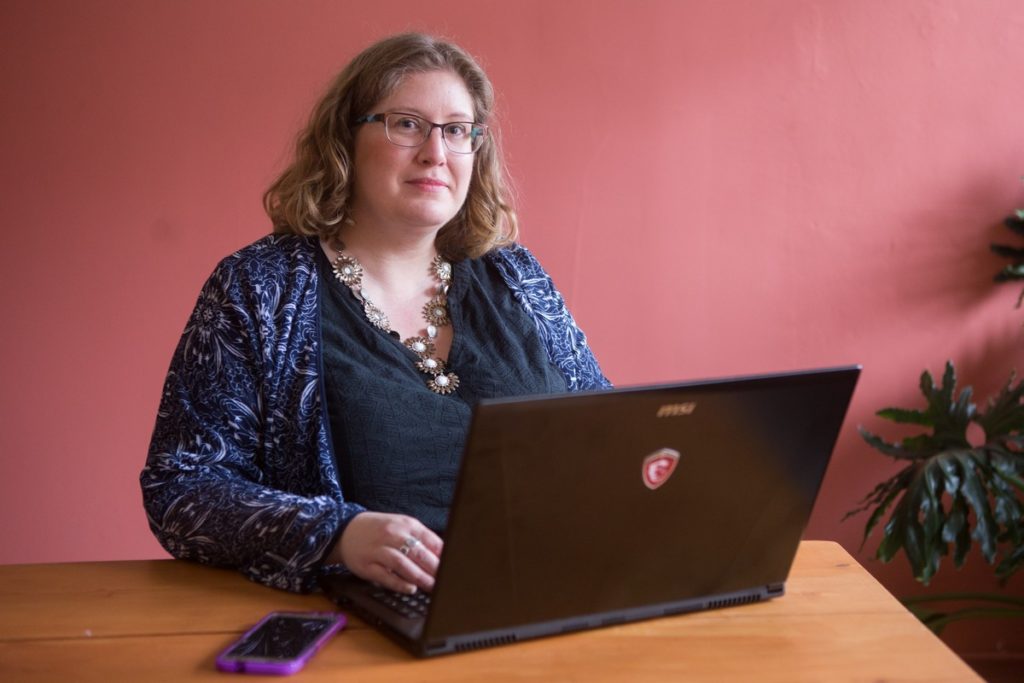
Let’s dig deep. Every Monday, I send out my Body Liberation Guide, a thoughtful email jam-packed with resources for changing the way you see your own body and the bodies you see around you. And it’s free. Let’s change the world together.
Hi there! I'm Lindley. I create artwork that celebrates the unique beauty of bodies that fall outside conventional "beauty" standards at Body Liberation Photography. I'm also the creator of Body Liberation Stock and the Body Love Shop, a curated central resource for body-friendly artwork and products. Find all my work here at bodyliberationphotos.com.

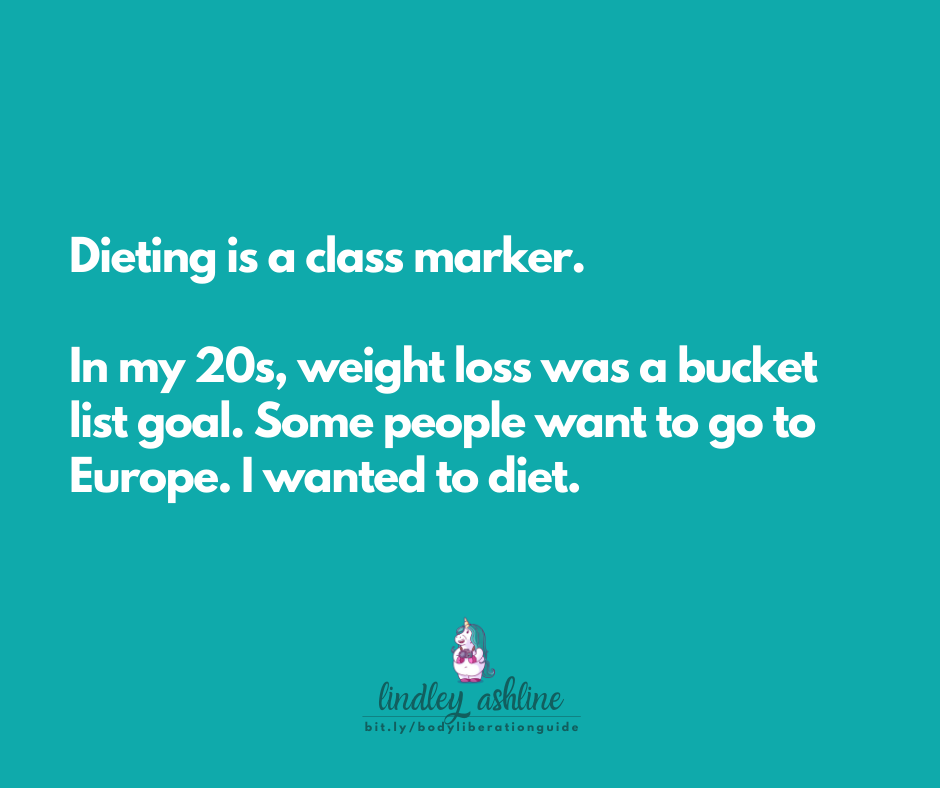

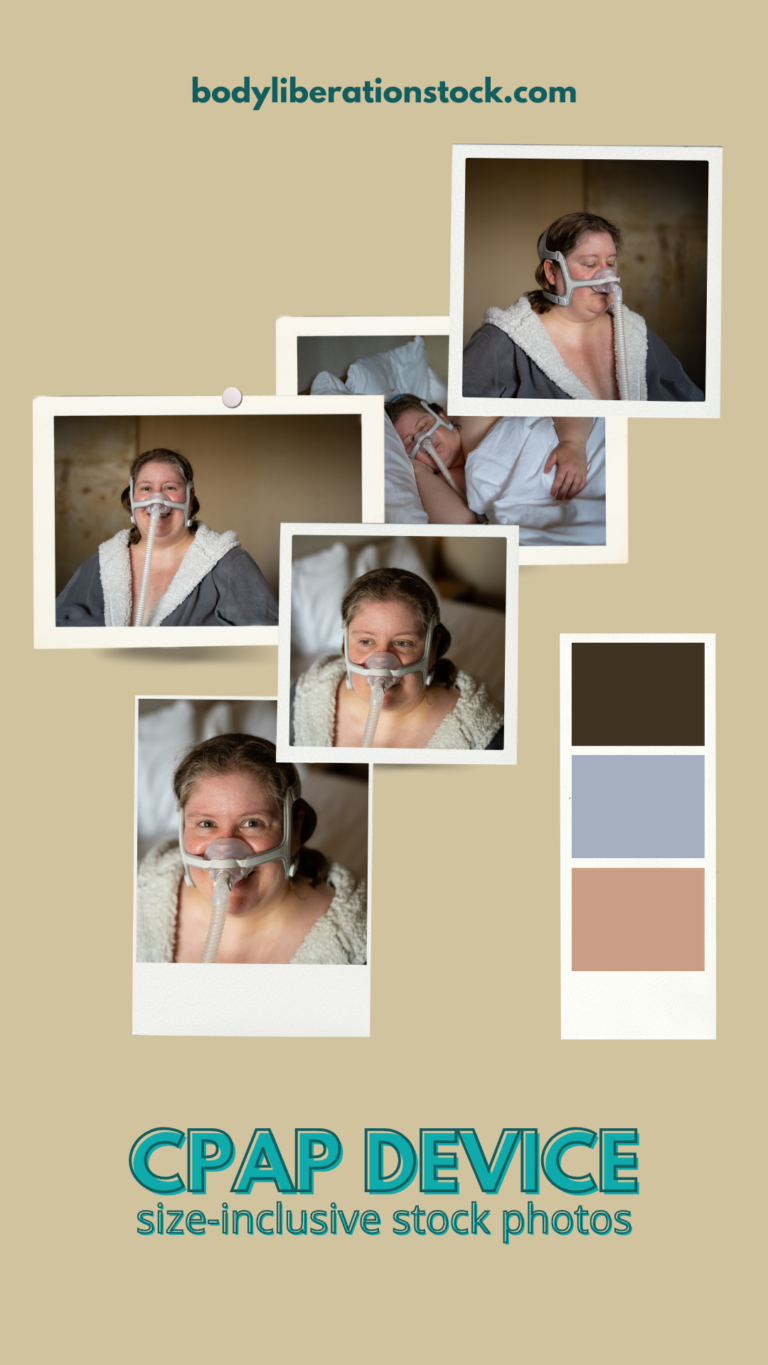

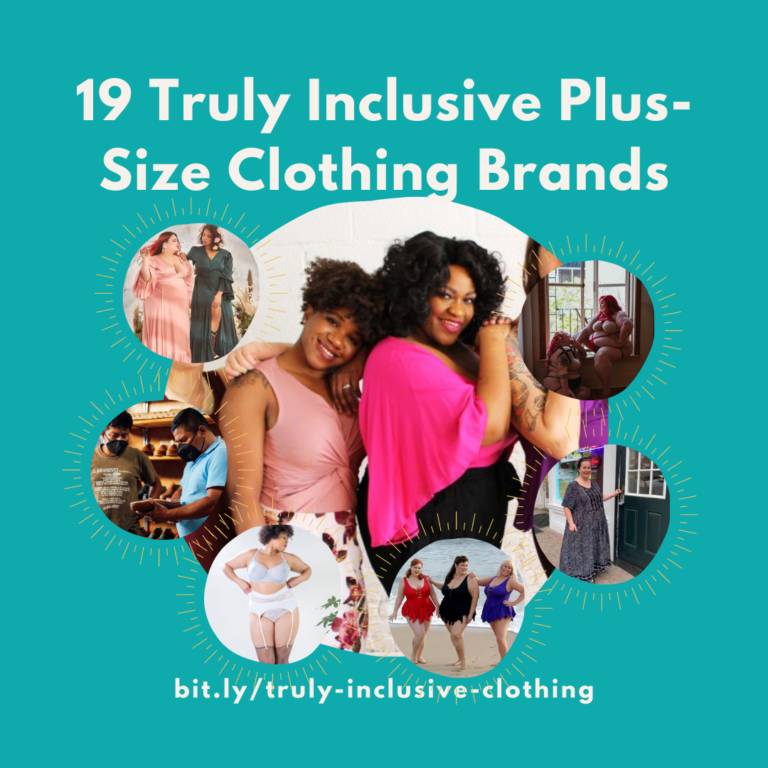
![[Image: A fat white woman with pink hair stands on the shore of a wooded lake in a purple sleeveless dress, with a wing-print scarf blowing in the wing behind her outstretched arms.]](https://bodyliberationphotos.com/wp-content/uploads/2022/12/2016-09-10_1015_x1200-768x512.jpg)
